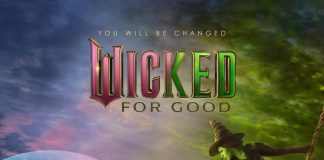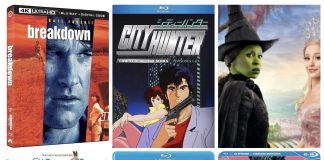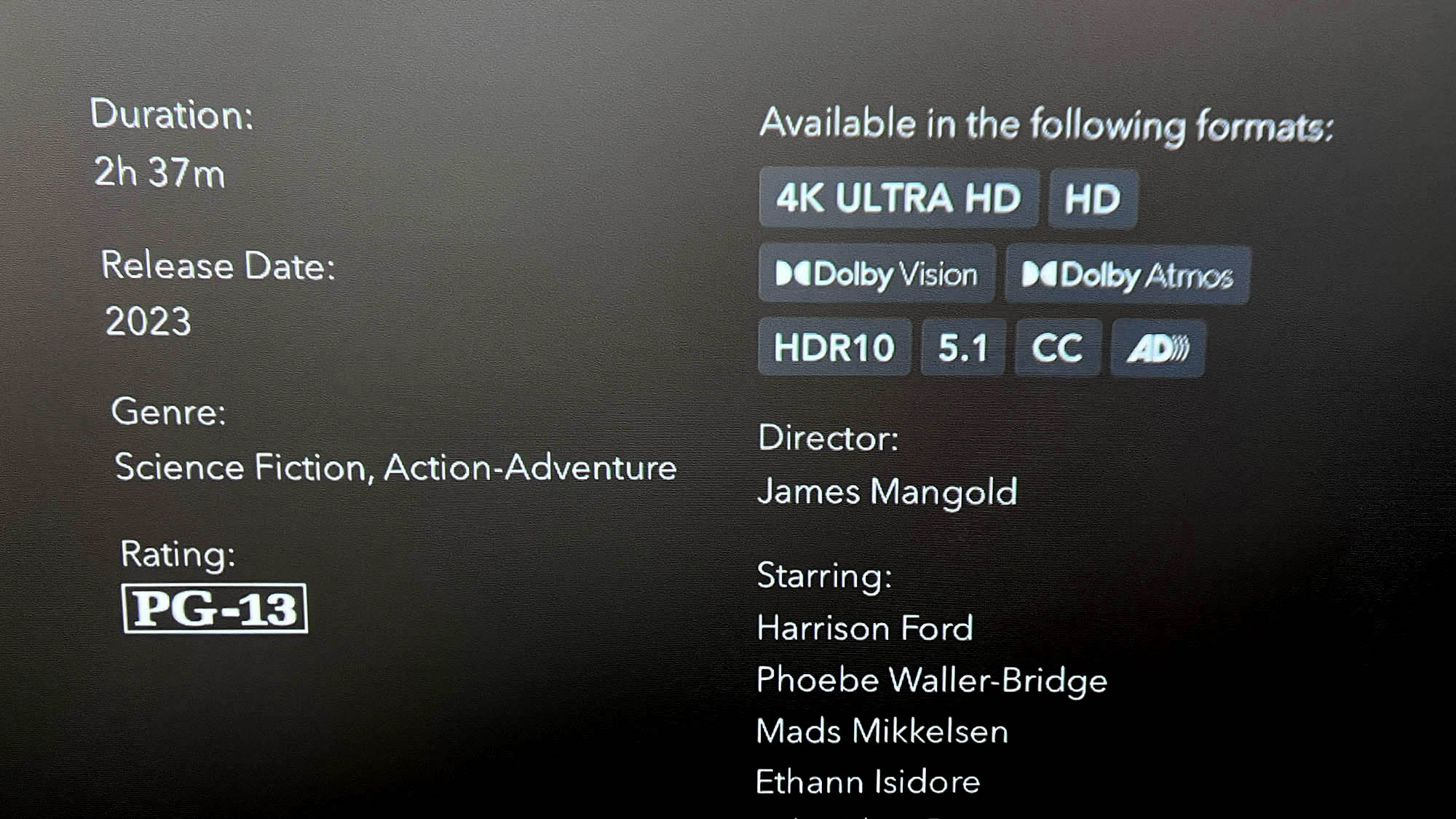
What is better Dolby Vision or HDR10/HDR10+? And, why does my TV show both HDR formats?
There are two common High Dynamic Range (HDR) formats that are used with disc and digital media, Dolby Vision and HDR10/HDR10+. The other common HDR format is HLG (Hybrid Log-Gamma), but it is typically used for live broadcasts and streams and can be found through providers such as DirecTV and YouTube.
HDR10+ is not so common, but can be found on some 4k Blu-ray Discs and movies offered on Apple TV+. The spec is an improvement on the HDR10 format and allows dynamic rendering of the metadata associated with color depth. All the HDR specs essentially provide a wider 10-bit color gamut on HDR-compatible TVs by taking advantage of the Rec.2020 (or BT.2020) spec, an improvement over the traditional Rec.709 standard.
So why does HDR content play in either Dolby Vision or HDR10/HDR10+? The reason is that content can be encoded with both specs so that the receiving device can translate and output to a compatible screen. Not all content is embedded with both HDR specs, but a good amount is. This allows a more seamless transition of the spec from source to output. As an example, Sony TVs support Dolby Vision while Samsung TVs only support HDR10 (and newer models HDR10+).
How does this play out when searching for titles that are compatible with your TV, monitor, or mobile device? Let’s use the movie Indiana Jones and the Dial of Destiny as an example, and the streaming service Disney+ on Apple TV 4K.
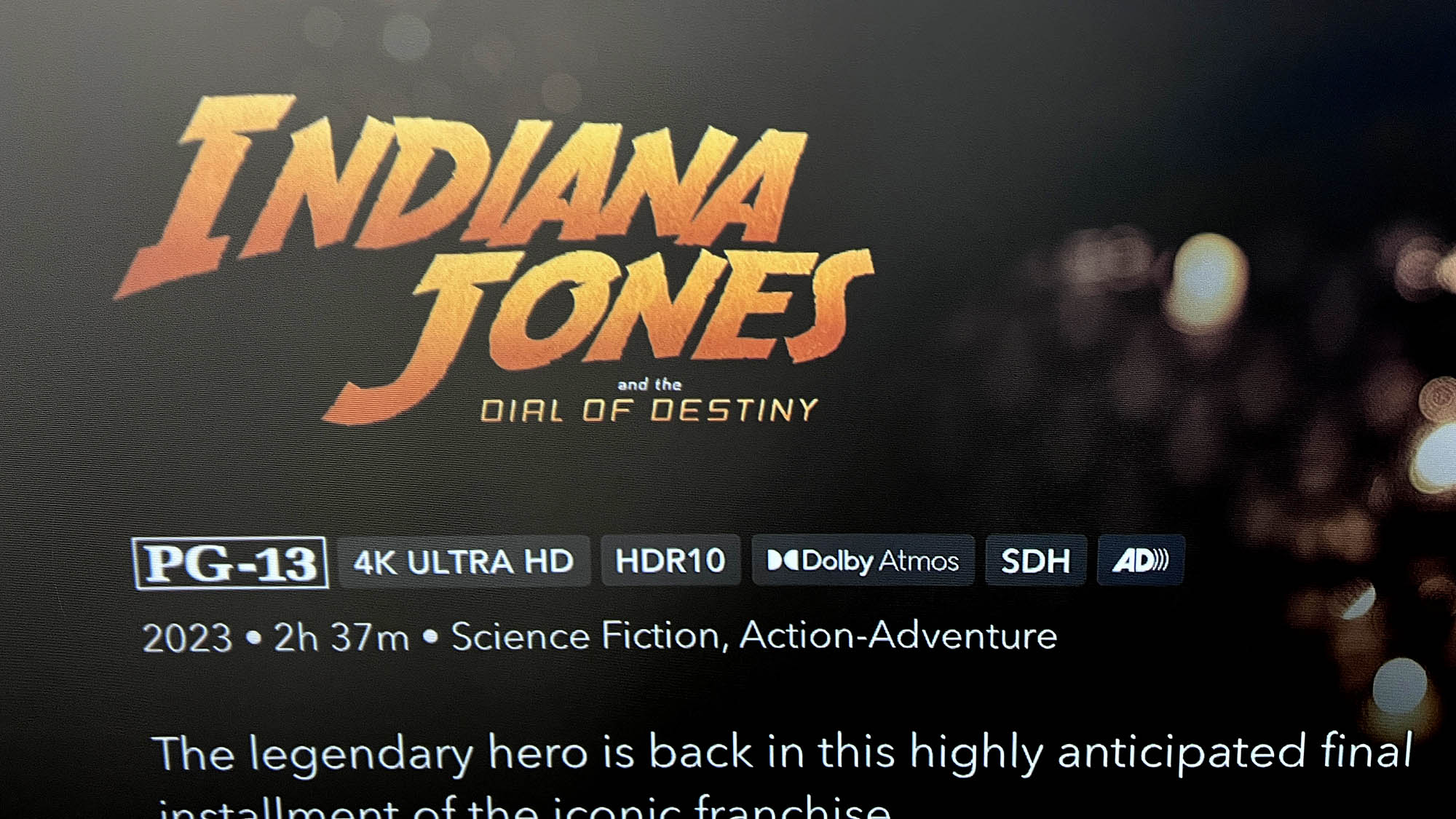
When searching for the title on the Disney+ app, you will see that the HDR spec will vary according to the screen it is connected to. When Apple TV is connected to an HDR display such as an Epson LS800 projector, it shows as HDR10 because that is what the projector supports (it should be noted that home theater projectors typically do not support Dolby Vision).
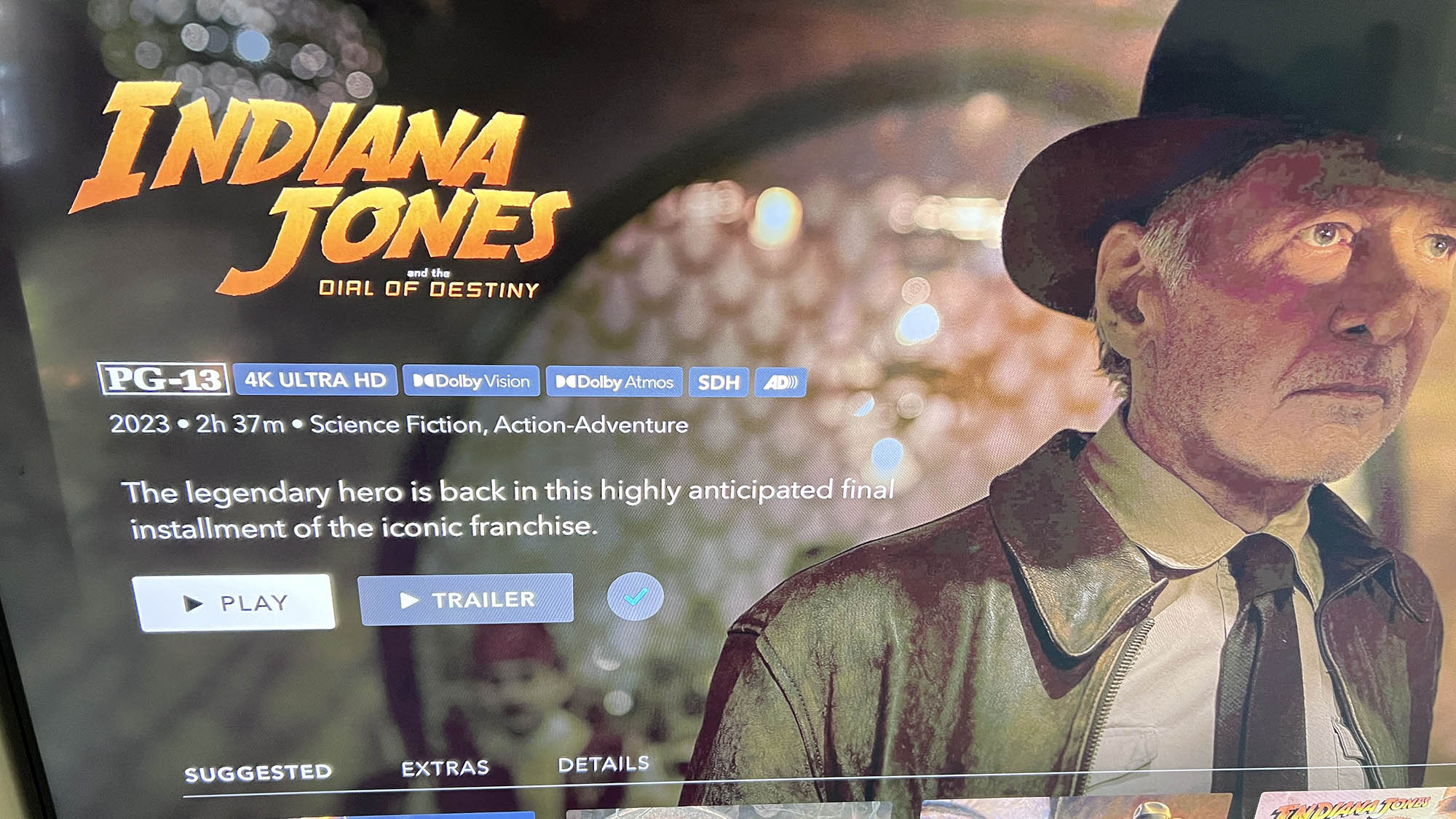
However, when the Apple TV 4K media player is connected to a Dolby Vision HDR TV such as a Sony Bravia, the description will indicate Dolby Vision as in the screenshot above.
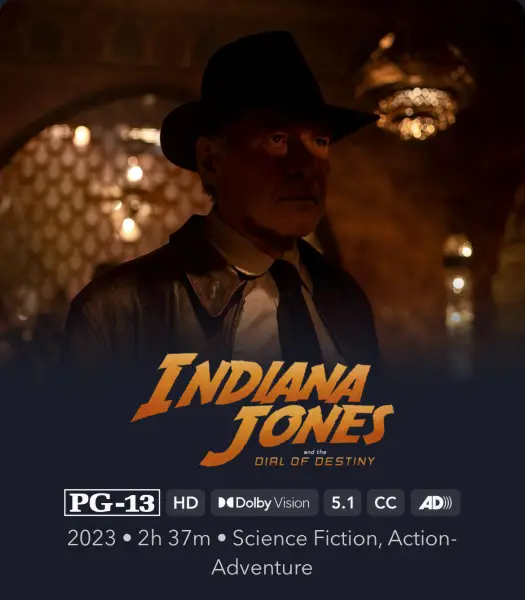
Accordingly, an Apple iPhone that supports Dolby Vision will show that logo instead of HDR10, as seen in the phone screenshot above. (You might also notice that the resolution shows HD. That’s because even though the movie is offered in 4k the iPhone screen with which the screenshot was taken is not quite 4K resolution.)
Disney+ does offer a more concise description of the movie or TV show specs as shown in the screenshot above. In the description for Indiana Jones and the Dial of Destiny you can see it offers both Dolby Vision and HDR10. This is helpful for knowing what HDR specs can be streamed or downloaded from Disney+. Not all streaming services provide this type of description though.
One might also note that disc and media players, TVs, and computer monitors may have different HDR modes that approximate what the HDR specs are meant to do, which is to expand the color depth. The software only attempts to enhance the image though, and is not consistent with the official Dolby Vision and HDR10 specs.
Also Read: How To Watch Dolby Vision HDR Movies & TV Shows
Related: Apple TV 4k 2nd-Gen vs. 3rd-Gen Comparison











